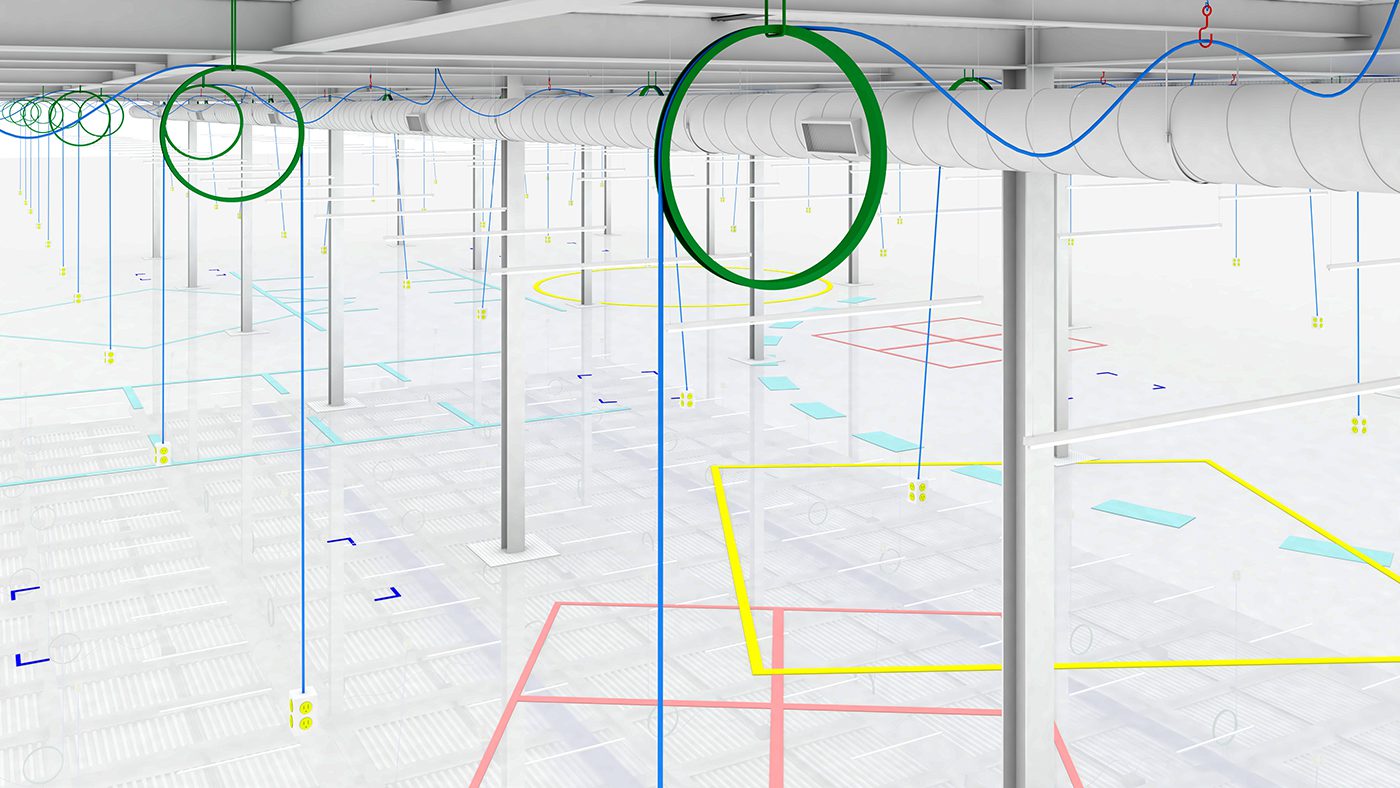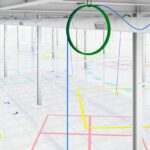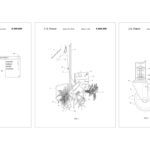
Published:
07/01/2018
OFFICE-PARTY is situated within the data-driven condition of immaterial labor—flows of data, surveillance, and efficiency analytics demanded by corporate interests, managerial consultancies, and new technologies of production. Teasing out architecture’s ability to engage in a secretive game of counter-productivity measures, this project proposes the re-design of the office through a counter-BIM, seeking to co-opt corporate tactics of digital management to support an alternative ethos of un-working. As a post-occupancy platform, this software allows users to anonymously alter their furniture systems to create new proliferations, unfamiliar re-arrangements, and inefficient clumpings. Controlled by a phone/desktop application, the lighting and desk arrangements can transform with a simple swipe, orchestrating a network of geo-tagged motorized wheels and brightly colored casters installed to the desks for increased mobility. Further reprogrammed are the ground and ceiling conditions. Covering the slab is a graphic landscape of brightly colored markings: geometric terrains that suggest alternative compositions, arrangements, and spatial structures for play. The ceiling is littered with a confetti of cord trays, extension cords, and retractable power cord reels, all hanging from mobile hooks, straps, and brackets integrated into an adjustable ceiling grid. Adopting the tropes of contemporary tech office aesthetics—pop colors, glossy surfaces, playful shapes and irreverent dispositions, even the rhetoric of mobility, collaboration, and adaptability—OFFICE-PARTY functions as a sort of Trojan Horse, a switch disrupting office-planning protocols to undermine the nature of work.
It’s 5:45. Almost everyone has left… the computer screens have flickered into static and the hum of the office has died down… OFFICE-PARTY is not a proposal but a condition, a condition of illicit glances and stolen dances. It’s a moment in which the rules can be set aside, the desks reconfigured, and the suppressed desire to move can be surrendered to. As the workers gather, at first sheepishly but with increasing eagerness, the fluorescents flick off and the music starts… “A fit of shaking passes over the group” (Dan Graham, Rock My Religion). The dance begins. As the demarcation between life and work slips back and forth, the OFFICE-PARTY suggests a reformatting of the culture of labor. The day-time spatial obedience to the economies of production is the necessary alibi for a night of pleasure.













